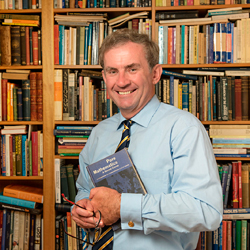IB HSC Thermal Physics
/A tutorial sheet of true-false questions on thermal physics concepts is given below.
- Particles of an ideal gas do not collide with each other.
- Particles of an ideal gas all have the same speed.
- The ideal gas approximation works best at high temperatures and pressures.
- The pressure exerted by a gas is due to the momentum of the particles.
- No heat energy flows between two objects at the same temperature.
- A large mass at a low temperature has the same amount of heat energy as a smaller mass at a higher temperature.
- To find the Kelvin temperature we add 273.16 to the celsius temperature.
- An object of higher specific heat capacity takes a longer time interval to undergo a given temperature change than one of lower specific heat capacity.
- Heat energy is the amount of energy a substance possesses.
- The SI unit for thermal conductivity is the Jm-2s-1K-1
- A flat sheet of iron of mass m is left in the Sun and its temperature changes by T. If a flat sheet of iron of mass 2m is left in the Sun for the same time interval its temperature change is T/2.
